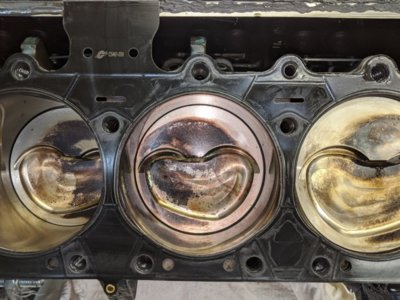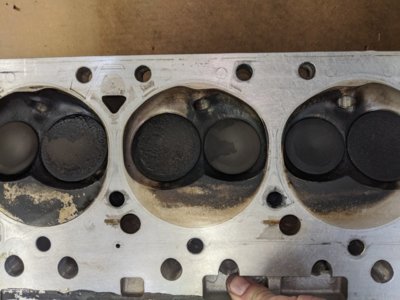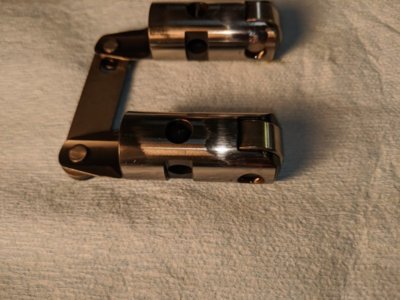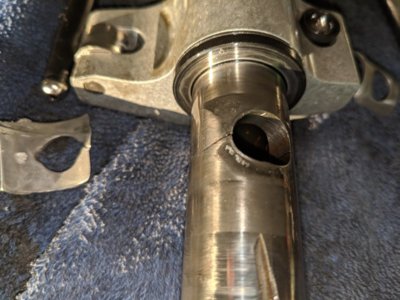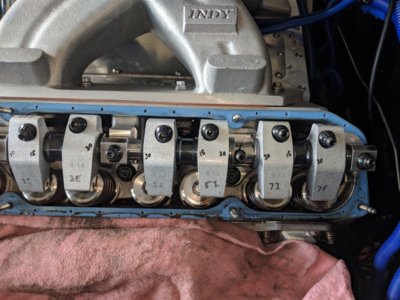Brewzer67
Well-Known Member
I hurt the motor last year and am finally able to start tearing things down to fix it. While trying to figure out what went wrong I am seeing signs that lead me to believe the valves were either floating or bouncing off their seats. I am running the Trickflow 270's with the springs for the big roller cam. Bullet ground the cam (.700 lift and 268@.050) and said they should be ok but I suspect they were either light over the nose or too soft of seat pressure for the grind. I did check their pressures and clearances before running them and everything spec'd out with what their published numbers were (and were actually a smidge stiffer). Here is a picture of the tops of the stems that leads me to think it was float. I don't believe it was float though as the intakes and exhaust both look the same and I know it's not as likely to float an exhaust valve. The other reason I lean away from float is that the motor only saw the high side of 6500 a few times and was just street and freeway driven the rest of the time. Nothing else shows any sign of issues (no odd chafing of retainers, no signs of coil bind, no beat up pushrod cups or bent pushrods). The only other odd thing was that the shaft hold down nuts had backed off on the one head that resulted in the failure. This is what leads me to think it was some other harmonic thing that caused the ultimate failure.
Any thoughts?
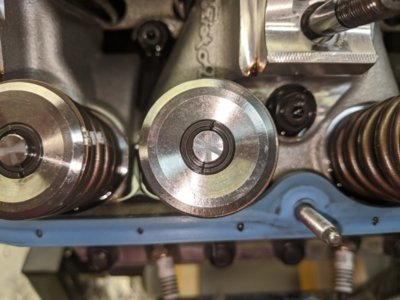
Any thoughts?


